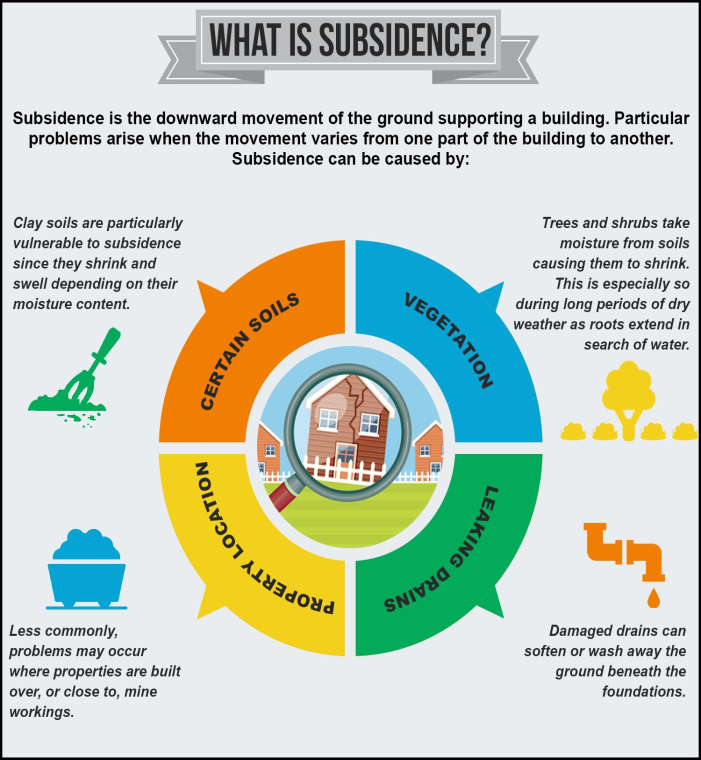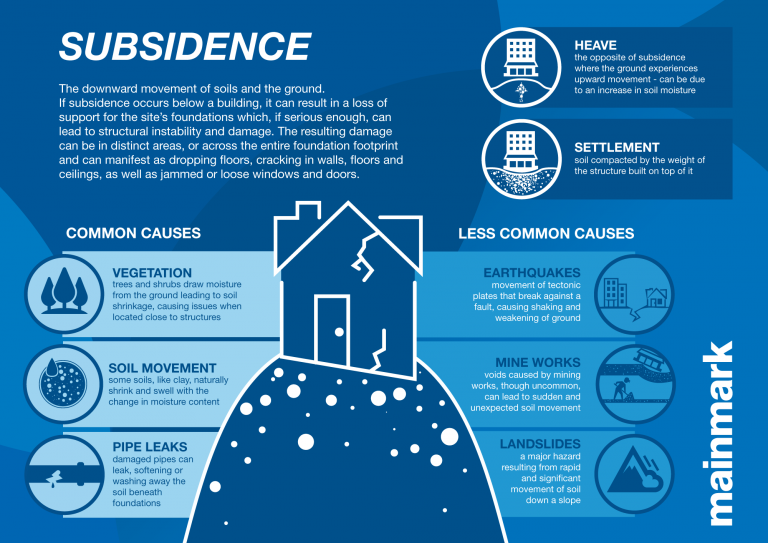Description

Copyright infringement not intended
Picture Courtesy: https://www.downtoearth.org.in/news/urbanisation/why-have-bikaner-and-barmer-in-rajasthan-reported-land-sinking-in-the-last-month--96169
Context: The recent incidents of land sinking in the Bikaner and Barmer districts of Rajasthan have raised concerns among geologists and residents.
Details
- Geological Survey of India (GSI) officials cited groundwater depletion as a primary factor leading to land subsidence. They highlighted the compaction of pore spaces due to the drying up of water-bearing aquifer rocks, leading to the sinking of land.
About Land Subsidence
- Land subsidence is a serious issue in India, where groundwater extraction can cause land to sink.
- It mainly occurs when groundwater is mined unplanned, particularly in rocks made of fine-grained sediments. The decline of the groundwater table causes vertical compression of sediments-bearing water, leading to consolidation of soil and land subsidence.
- The effects of land subsidence can include settlement of upper clay layers, damage to infrastructure, flooding due to ineffective drainage systems, activation of lines of weakness, and changes in stream or drain gradients.

Land Subsidence Mechanism
- Land subsidence occurs primarily when groundwater is extracted from underground aquifers at a rate faster than it can be naturally replenished.
- When groundwater is removed, the pore spaces in the soil that were previously filled with water collapse, leading to compaction and settling of the ground surface. This is more prominent in areas with fine-grained sediments, where the soil structure is more susceptible to compression.
|
As groundwater levels decline, the sediments that were previously supported by water begin to compress vertically, resulting in land sinking. This vertical compression can sometimes lead to lateral compression as well. The decrease in pore water pressure within the soil increases the effective stress, causing consolidation of the soil, which manifests as land subsidence.
|
Seriousness of the Issue
- Global Economic Impact: Land subsidence is a global phenomenon with significant economic consequences. Countries like China, the Netherlands, and the United States have experienced extensive economic losses due to land subsidence, with damage to infrastructure, loss of agricultural land, and increased risks to public safety.
- Irreversible Nature: One of the most concerning aspects of land subsidence is its irreversibility. Once the ground has subsided, it is challenging, if not impossible, to restore it to its original state. This highlights the urgency of addressing the root causes of land subsidence, particularly excessive groundwater extraction.
Factors contributing to land subsidence
- Dissolution of Limestone: In karst terrains, which are characterised by limestone-rich landscapes, underground water flow can dissolve limestone, creating voids beneath the surface. Over time, these voids may collapse, leading to sinkholes and surface subsidence.
- Mining Activities: Subsurface mining operations, such as pillar extraction and longwall mining, can destabilise underground rock formations. When mined voids collapse, surface subsidence may occur, causing the ground to sink.
- Extraction of Petroleum and Natural Gas: The extraction of petroleum and natural gas from underground reservoirs can reduce the pressure within these reservoirs. As a result, overlying soil layers may compact and settle, leading to land subsidence.
- Earthquakes: Seismic activity, such as earthquakes, can cause abrupt changes in the Earth's surface. Fault movements and the shaking of loose sediments can result in subsidence, particularly along fault lines and in areas prone to ground shaking.
- Groundwater Extraction: Excessive extraction of groundwater can lead to the compaction of underlying soil layers. As groundwater levels decline, the pore spaces within the soil may collapse, causing the land surface to sink gradually.
- Degradation of Organic Matter: Changes in groundwater levels can impact the decomposition of organic matter in lowland areas. Drainage of wetlands for human development can accelerate soil oxidation and organic decomposition, leading to land subsidence.
- Faulting-Induced Subsidence: Differential stresses within the Earth's crust can lead to faulting-induced subsidence. Fault movements accommodate geological stresses, causing changes in the land surface, including both vertical and horizontal movements.
- Seasonal Effects: Seasonal variations in soil moisture content, particularly in clay-rich soils, can affect subsidence. Wetting and drying cycles can cause soil expansion and contraction, leading to changes in the land surface over time.

Effects of Land Subsidence
- Infrastructure Damage: Subsidence can damage roads, bridges, buildings, and other structures, leading to safety hazards and increased maintenance costs.
- Flooding: Poor drainage due to subsidence can increase the risk of flooding, particularly in urban areas with inadequate drainage systems.
- Environmental Impact: Land subsidence can lead to saltwater intrusion, loss of wetlands, and reduced agricultural productivity, impacting ecosystems and biodiversity.
- Economic Losses: Damage to infrastructure, loss of agricultural land, and increased insurance costs contribute to economic losses associated with land subsidence.
Way Forward to Reduce Land Subsidence
- Slope Stabilization: Implementing measures such as terracing and retaining walls can stabilize slopes and prevent erosion-induced subsidence.
- Vegetation Planting: Planting trees and deep-rooted vegetation can stabilize soil and prevent erosion, reducing the risk of subsidence.
- Drainage Control: Effective drainage systems can prevent waterlogging and soil compaction, reducing the risk of subsidence in affected areas.
- Strengthening Foundations: Reinforcing building foundations can mitigate the effects of subsidence on structures, improving their stability and resilience.
- Planning and Zoning: Strategic planning and zoning regulations can restrict development in high-risk areas prone to subsidence, reducing exposure to potential hazards.
Conclusion
- Land subsidence, caused by natural processes and human activities like mining and groundwater extraction, poses risks including infrastructure damage and environmental impact. Implementing solutions such as slope stabilisation and strategic planning is crucial for mitigating these risks and ensuring sustainable management of landscapes.
Source:
Down to Earth
Down to Earth
|
PRACTICE QUESTION
Q. Land subsidence can disproportionately impact marginalized communities and lower-income residents. Analyze the social and economic equity issues associated with land subsidence and propose solutions that ensure a just and equitable response to this challenge.
|


















